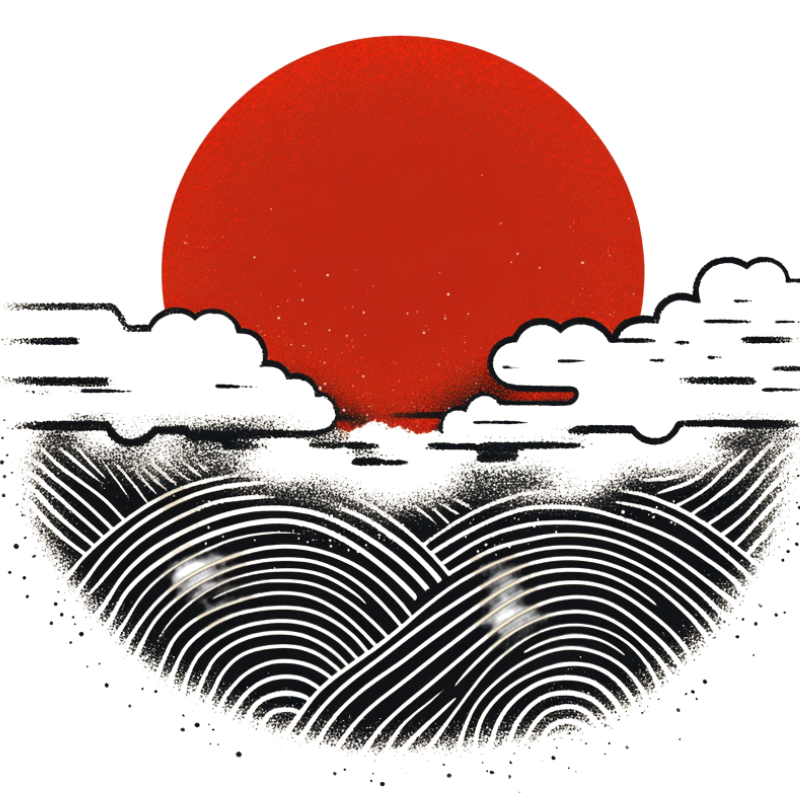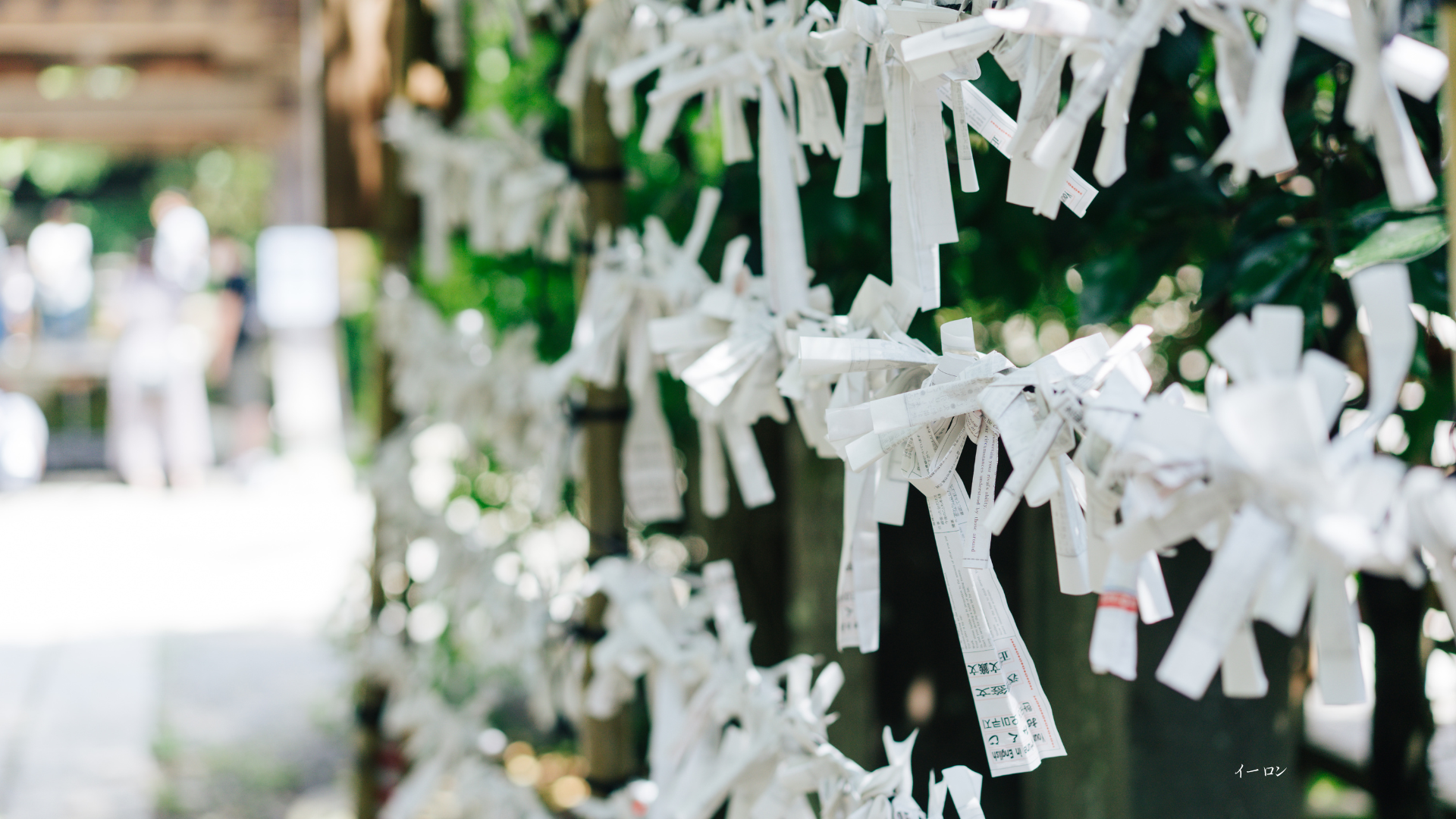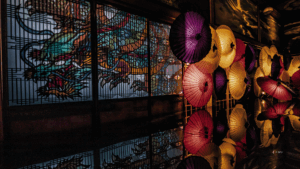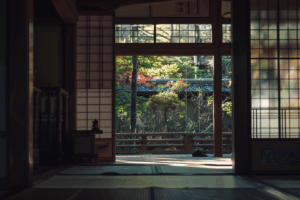Ever wondered about those little white papers tied to trees and wire racks at Japanese temples and shrines? They’re not prayer notes or wishes—they’re fortunes with a twist. Let me introduce you to one of Japan’s most peculiar spiritual practices that blends ancient divination with modern superstition. As an American Buddhist monk living in Japan for the past eight years, I’ve drawn hundreds of these fortunes and watched thousands of visitors experience this uniquely Japanese spiritual game of chance.
The Divine Lottery: What Are Omikuji?
Omikuji (御神籤) literally translates to “sacred lot” or “divine lottery.” These small strips of paper contain fortunes that range from excellent luck (大吉, dai-kichi) to terrible misfortune (大凶, dai-kyō). Most visitors to Japan might notice them tied to pine trees or special metal racks at temple grounds but miss the fascinating cultural depth behind this practice.
What makes omikuji truly YABAI (amazing/crazy/extreme) is that unlike Western fortune-telling that typically offers vague predictions, these Japanese fortunes provide specific guidance about various aspects of your life: business, love, travel, study, lost items, and even illness recovery. Some temples even specialize in particular types of fortunes—like academic success omikuji that are popular with students before exams.
The first time I encountered omikuji was at a famous temple in Asakusa during my initial month in Japan. I remember being completely baffled by the metal container filled with numbered sticks and watching Japanese visitors shake it with such purpose. When a local noticed my confusion, they laughed and guided me through the process. I drew a 中吉 (middle blessing) that day, which accurately predicted I would “find unexpected joy in a foreign land but face initial confusion.” That specific prediction about my expat experience hooked me instantly on these fortune papers!
The Ancient Origins: Bamboo Sticks and Imperial Divination
The practice dates back over 1,000 years, though not in its current paper form. During the Heian Period (794-1185), imperial court officials used divination with bamboo sticks called “mikuji” to make important governmental decisions. Think of ancient Japanese emperors shaking bamboo sticks to determine military strategy or tax policy—quite the government system!
What’s truly wild is that these imperial divination rituals gradually transformed into a public practice. By the Edo Period (1603-1868), ordinary people began using similar divination methods at temples and shrines. The transformation from imperial decision-making tool to commoner’s fortune-telling represents a rare democratization of spiritual practices in pre-modern Japan.
The Modern Ritual: How to Draw Your Fate
Here’s how the modern omikuji experience works:
- Make a small offering (typically ¥100-200) at the omikuji station
- Shake a metal container filled with numbered sticks
- When one stick falls out, note its number
- Find the corresponding drawer or box with your number
- Draw your fortune paper from that drawer
The YABAI part? The entire process operates on a principle the Japanese call “en-musubi” (fate-binding)—the belief that the stick that falls out isn’t random but divinely guided to you. In a culture that often carefully manages chance and uncertainty, this willing embrace of randomness as divine guidance is fascinating.
Bad Fortune? Tie It To A Tree!
Perhaps the most visually striking aspect of omikuji is what happens after you receive a bad fortune. Instead of taking the unlucky prediction home with you, you tie the paper to a designated pine tree or metal frame at the temple grounds.
This practice, called “musubitsuki,” represents one of the most visually stunning examples of Japanese pragmatic spirituality. The logic goes: by leaving the fortune paper at the sacred space, you’re physically binding the bad luck to the sacred ground where the kami (gods/spirits) can neutralize it. It’s spiritual insurance against misfortune!
Some locals joke that trees heavy with bad fortunes look like they’re “suffering under the weight of everyone’s problems.” During peak visiting seasons like New Year, these “fortune trees” become so laden with paper that they create a surreal, snow-like appearance regardless of the season.
I’ve developed a little ritual over the years: whenever a friend or temple visitor gets a bad fortune, I document it with photos before they tie it to the tree. We’ve created a small album we call “Disasters Avoided” — a pictorial record of all the misfortunes we’ve symbolically escaped through this neat spiritual hack. One particular tree at a temple in Saitama Prefecture has become our go-to “misfortune disposal system” when life gets rough. The monks there know me well enough now that they just smile and shake their heads when they see me approaching with a camera and a grimacing foreign visitor clutching a 凶 (curse) paper!
Beyond Basic: Specialized Omikuji That Will Blow Your Mind
While standard omikuji are fascinating enough, some temples offer specialized versions that take the practice to another level:
- Animal-shaped Omikuji: I’ve encountered adorable clay figurines of the 12 zodiac animals that contain fortunes inside them at several temples in the Kamakura area.
- Floating Fortune Papers: Some larger temples in Tokyo offer “mizukuji” that reveal your fortune when placed in water—the characters magically appear when wet!
- Fortune Vending Machines: Yes, some shrines have modernized with omikuji dispensers that look like gachapon (capsule toy) machines, complete with character-themed fortunes.
- Color-changing Omikuji: A few innovative temples now offer thermal papers that change colors depending on your body temperature, supposedly revealing how “hot” or “cool” your luck will be.
I’ve even seen tech-themed omikuji geared toward IT professionals with fortunes specifically about your computer’s health and digital career prospects—a perfect blend of ancient spirituality and modern concerns!
I still remember visiting a shrine in Kyoto where I discovered beautiful “love fortune” omikuji that come attached to heart-shaped wooden plaques. A friend dared me to draw one, joking that a monk shouldn’t need romantic advice. My fortune predicted that “an unexpected encounter near water will change your path.” Three months later, I met a wonderful Japanese calligraphy teacher at a waterfall meditation retreat who ended up becoming one of my closest spiritual advisors. While not romantic, this “love of learning” connection proved remarkably accurate! Since then, I’ve developed a healthy respect for these specialized fortunes that seem eerily precise at times.
The Psychological Genius Behind the Practice
What’s particularly YABAI about omikuji is the psychological framework they provide. Japanese culture has expertly balanced fatalism with agency in this practice.
If you receive a good fortune, you’re motivated to work harder because the divine powers have predicted your success. If you get a bad fortune, you have a ritual method (tying it to a tree) to potentially avoid that fate, while still being cautioned to be careful.
This delicate balance between accepting fate and actively working to change it represents a uniquely Japanese approach to life’s uncertainties. Unlike Western concepts of completely controllable destiny or completely predetermined fate, omikuji offers a middle path that acknowledges both chance and choice.
The Language of Luck: Understanding Omikuji Rankings
Part of what makes omikuji so intriguing is their detailed ranking system. From best to worst:
- 大吉 (Dai-kichi): Great Blessing
- 中吉 (Chū-kichi): Middle Blessing
- 小吉 (Shō-kichi): Small Blessing
- 吉 (Kichi): Blessing
- 半吉 (Han-kichi): Half-Blessing
- 末吉 (Sue-kichi): Future Blessing
- 末小吉 (Sue-shō-kichi): Future Small Blessing
- 凶 (Kyō): Curse
- 小凶 (Shō-kyō): Small Curse
- 半凶 (Han-kyō): Half-Curse
- 末凶 (Sue-kyō): Future Curse
- 大凶 (Dai-kyō): Great Curse
What’s fascinating is the statistical distribution—most temples don’t give an equal chance for each outcome. Typically, there’s about a 10% chance of drawing the very best fortune (大吉) and only about a 5% chance of drawing the worst (大凶). This deliberate weighting creates a generally positive experience while maintaining just enough risk to keep the practice exciting.
Contemporary Twists: When Tradition Meets Pop Culture
In recent years, omikuji have embraced pop culture in ways that would make traditional priests either laugh or cry:
- Anime Character Fortunes: Several major shrines collaborate with popular anime series for limited-edition character-themed omikuji.
- English Omikuji: Tourist-friendly temples now offer multi-language fortunes, though older Japanese visitors sometimes joke that “foreign gods might not understand English predictions.”
- Digital Omikuji Apps: Several popular apps now let you draw virtual fortunes, though traditionalists insist digital versions lack the spiritual power of paper ones blessed by temple priests.
- Fortune-telling Cafés: Urban areas feature cafés where you can enjoy your matcha latte while drawing themed omikuji designed by graphic artists rather than priests.
These modern adaptations show how this ancient practice continues to evolve while maintaining its essential spiritual core—a hallmark of Japan’s ability to blend tradition with innovation.
As a Buddhist monk with Western origins, I’ve found myself in the peculiar position of explaining traditional Japanese spiritual practices to Japanese youth who often know less about these customs than I do! Last year, I worked with a local tech company to create a hybrid omikuji system for their office shrine that uses QR codes on traditional paper fortunes to unlock digital content with more detailed explanations. The company’s older employees were skeptical at first, but they’ve embraced this blend of old and new. I believe Buddha himself would approve of this adaptive approach—after all, the Dharma teaches us that change is the only constant!
The Bottom Line: Why Omikuji Matter
Beyond their Instagram-worthy appearance tied to trees, omikuji represent something profound about Japanese spirituality—a comfortable relationship with uncertainty. In a culture often characterized by planning and precision, omikuji create a sanctioned space where randomness is not just accepted but embraced as potentially meaningful.
Next time you visit a Japanese temple or shrine, spare ¥100 for an omikuji. Whether you’re spiritually inclined or just culturally curious, the experience offers a window into a uniquely Japanese way of negotiating fate and fortune. And if you get a bad one? Well, there’s always a pine tree ready to take your problems away.
Just don’t be surprised if you find yourself checking the fortune before making your next big decision—that’s the subtle power of omikuji working its magic on you.
When I first arrived in Japan from Boston eight years ago, I approached omikuji with scholarly skepticism—an interesting cultural practice to study but nothing more. Now, I find myself unconsciously reaching for the omikuji box before any major life decision. Last month, when deciding whether to accept an invitation to lead meditation retreats in rural Kumamoto, I found myself at Tennoji Temple drawing an omikuji before making my final decision. The fortune read: “Southern journeys bring spiritual growth; distant mountains hold unexpected teachers.” I booked my ticket that afternoon.
Has this practice made me superstitious? Perhaps. But I prefer to think of it as embracing a beautiful cultural algorithm for introducing beneficial randomness into an overly structured modern life. Buddha taught that attachment to certainty causes suffering—and what better way to practice acceptance of uncertainty than through these sacred lottery tickets of Japanese spirituality?



